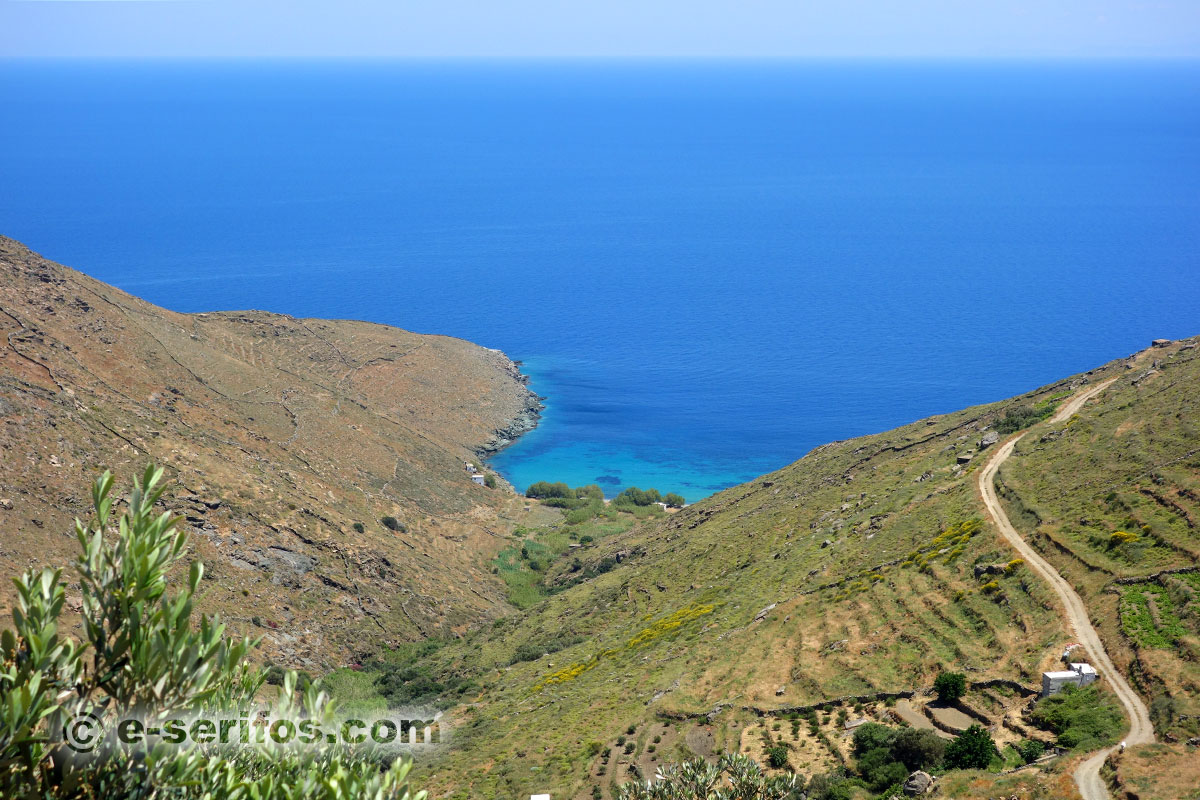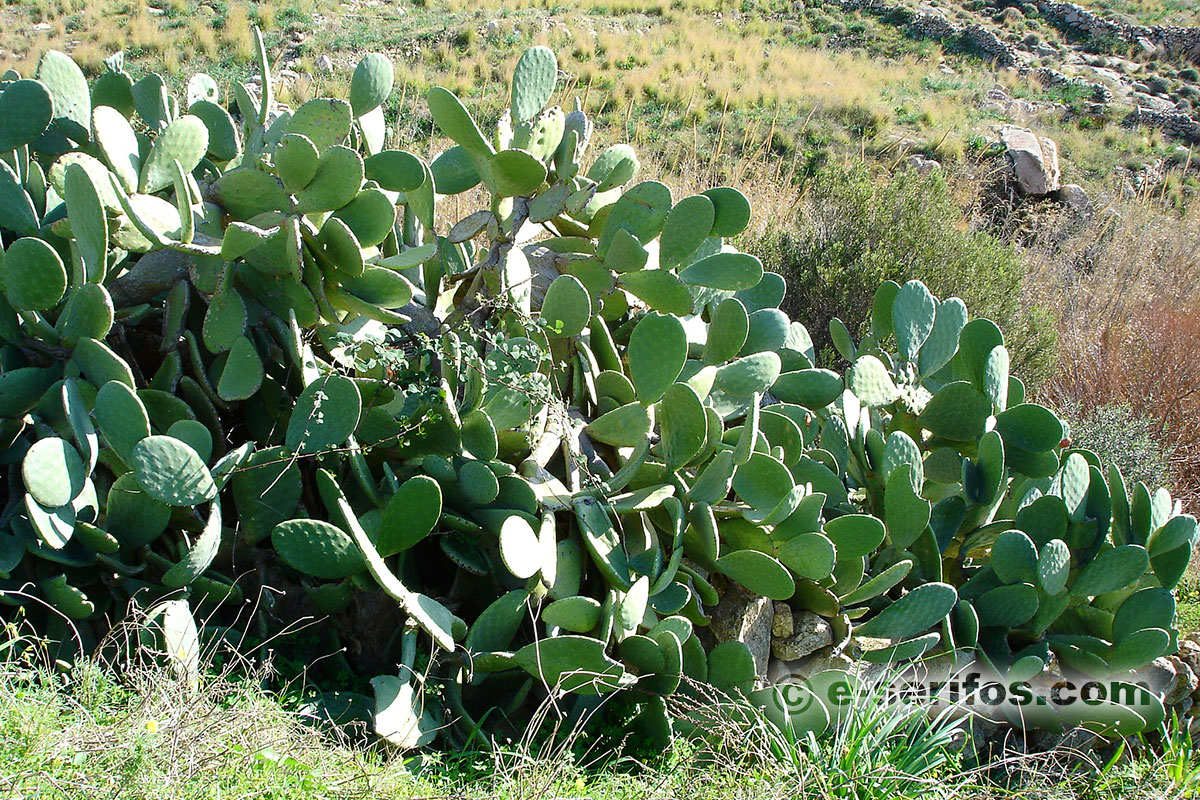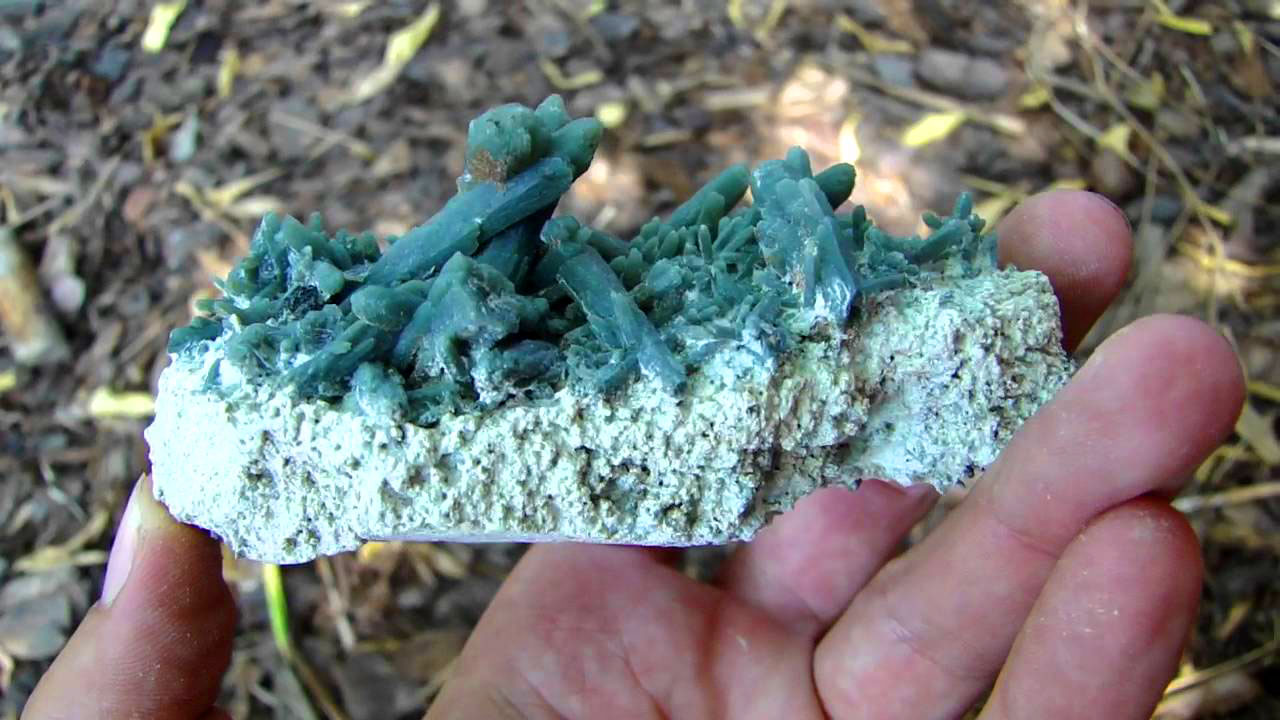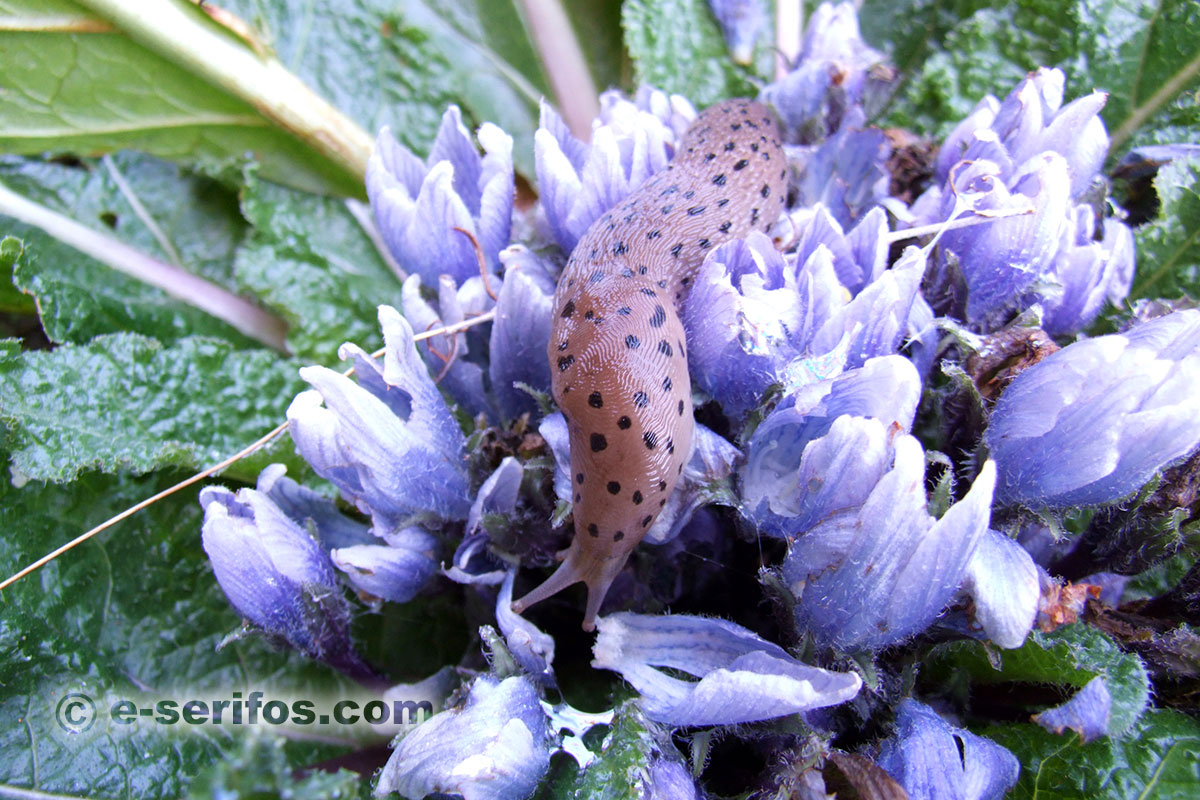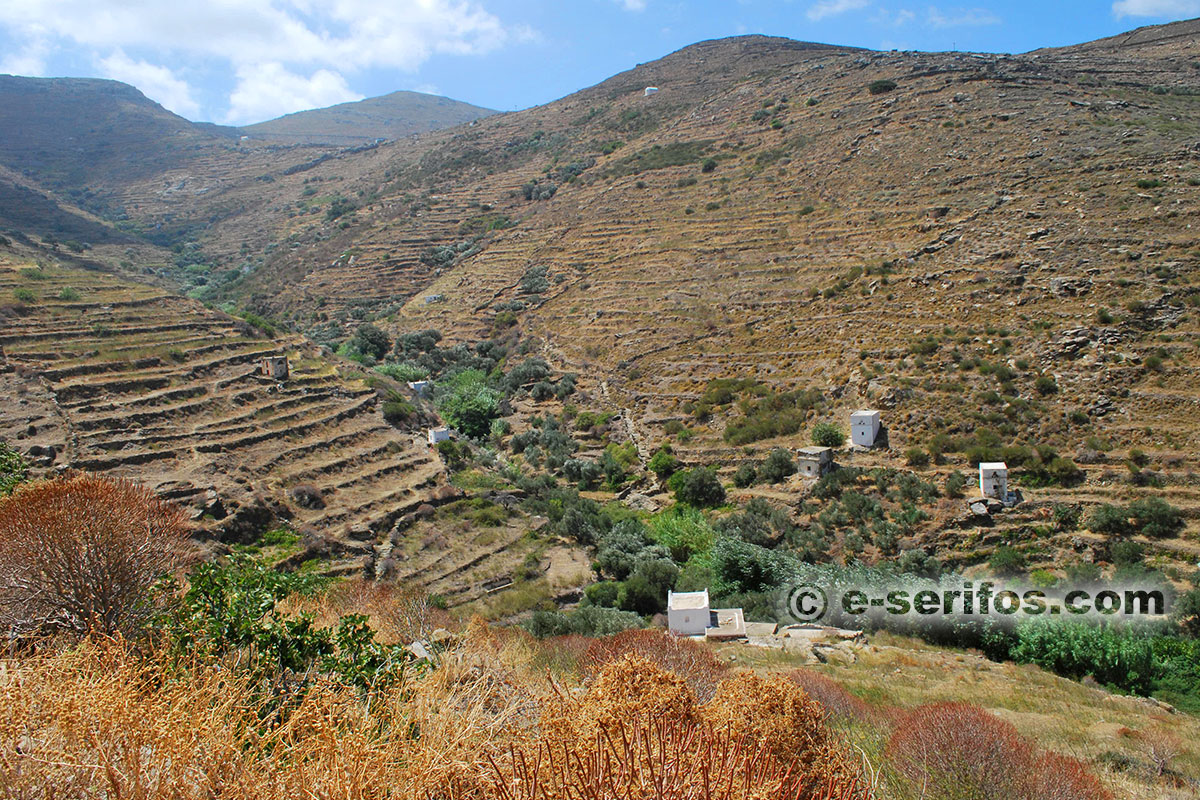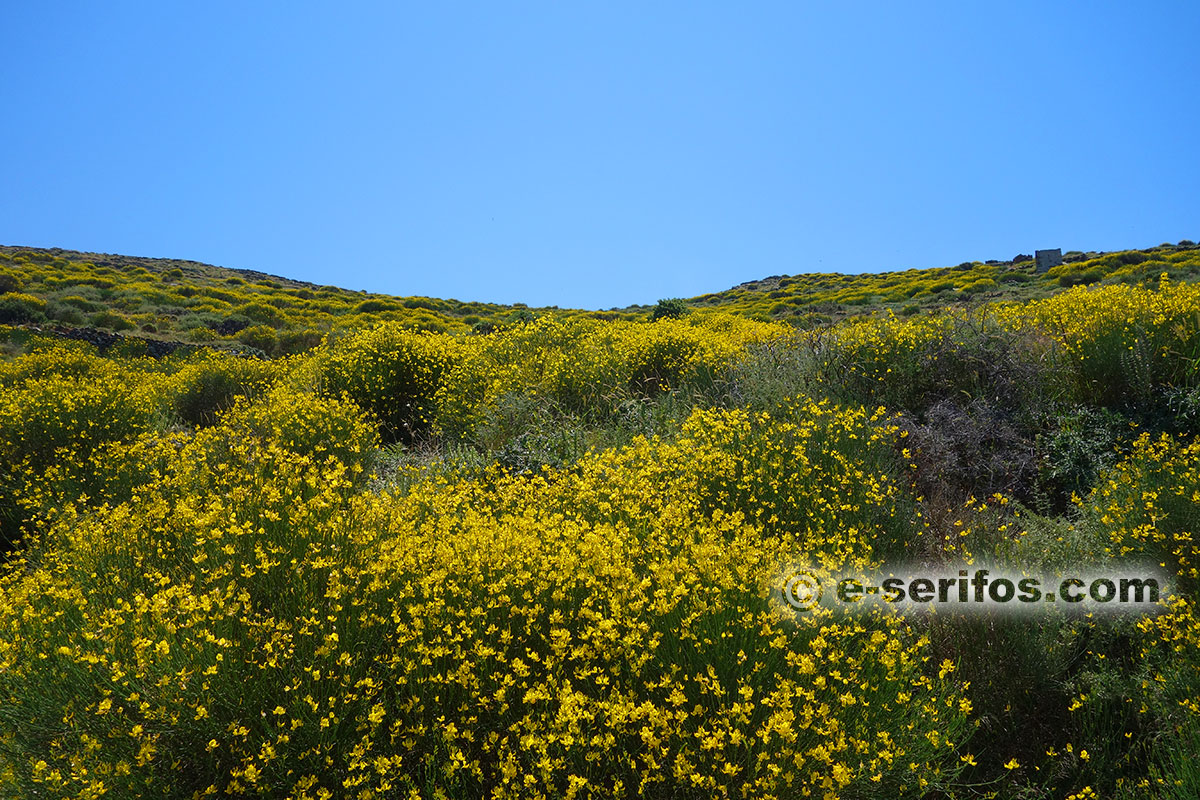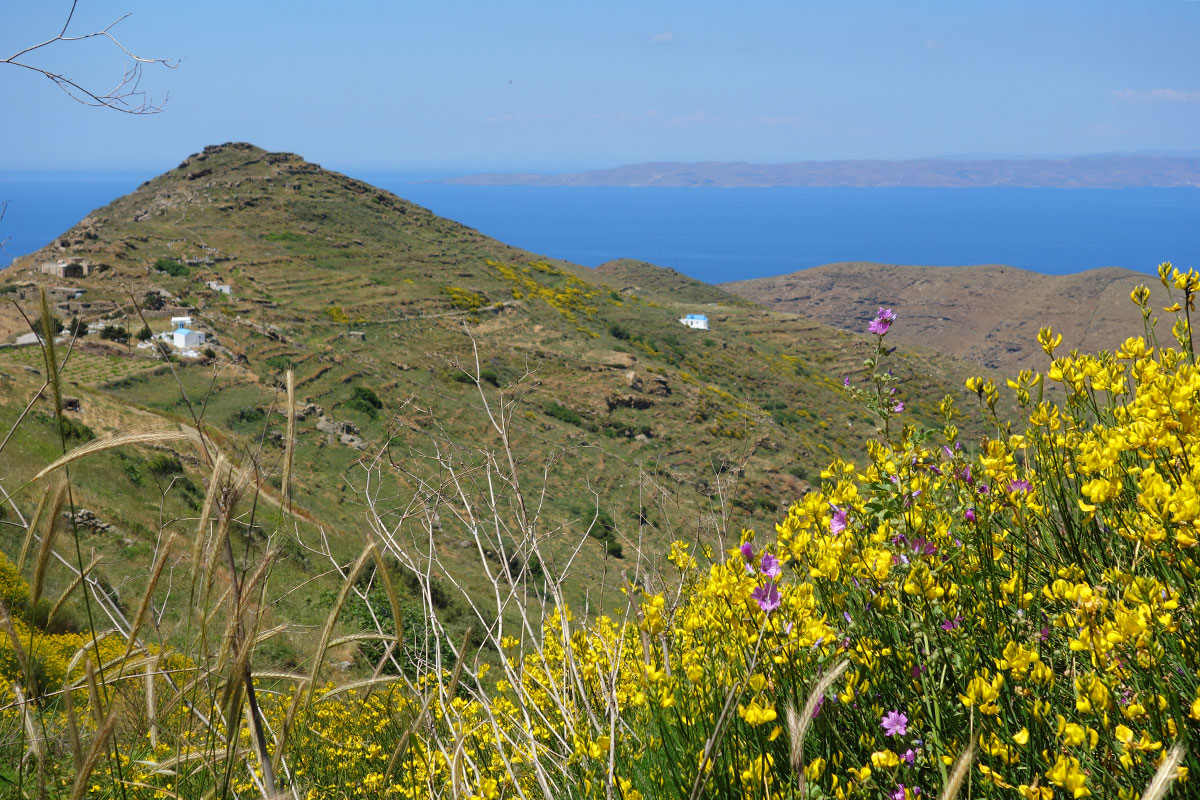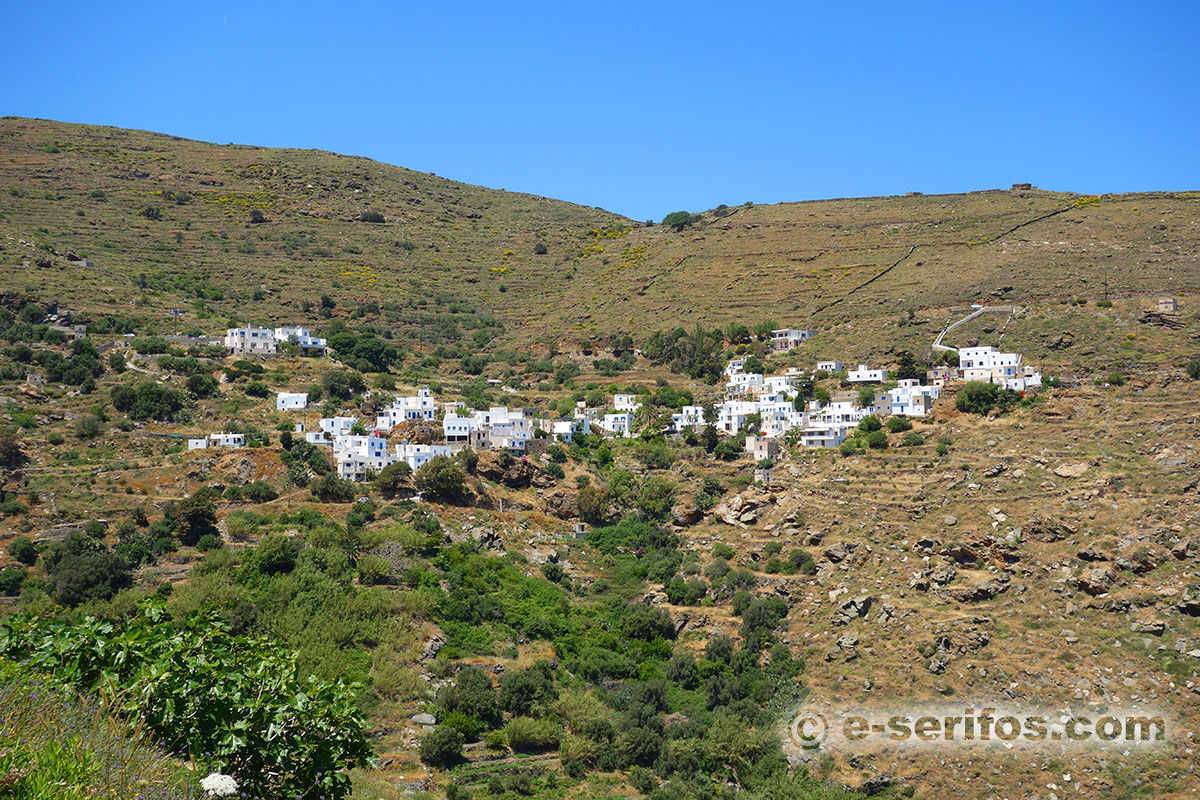Nature of Serifos
Physical characteristics, flora and fauna of Serifos
Natural characteristics of Serifos
In the prehistoric times, Serifos was uninhabited, as the rest of the Cycladic islands, with rich flora and fauna. This began to change during the Neolithic period, when the islands were inhabited and people began burning forests to create fields and grasslands. This is how the Cycladic landscape, as we know it today, was formed.
Its main characteristics are the bushy vegetation, where the land is cultivated as grassland, and the land terraces, where they cultivated grains, vineyards or a few olive trees.
There have been times when Serifos and the neighbouring islands were systematically cultivated and could feed an important part of the population. However, today most of the land terraces remain waste as the inhabitants are mainly involved in tourism.
The soil of Serifos was known for its wealth in minerals, to which the island owes its riches during the antiquity. The most important minerals were lievrite and green quartz.
The green quartz of Serifos is considered particularly rare and that found in the Megalo or Mia Chorio is exhibited in the mineralogical museum of Paris.
Today, Serifos is famous in the scientific circles of Europe because in its bowels there are still hidden minerals of good crystalline formations. Some of these minerals are: granite, andradite, fluorite, hematite, limonite, galena, magnetite and malachite. The most famous mines were in Koutalas, in Megalo or Mia Chorio.
During their wandering in Serifos, the visitors see low vegetation consisting mainly of brushwood, caper, oregano, thyme, prickly pears, geraniums, squirting cucumbers, vines and olive trees.
In the seabed there are colonies of the popular sea plant, poseidonia oceanica, which is protected by the European legislation.
South Serifos forms a wide network of habitats for the flora and the rich fauna of the region because of the combination of its geomorphologic and hydrogeological formations. Therefore, South Serifos has been integrated in the Natura 2000 network of the European Union under the code name GR4220009.
Gallery
